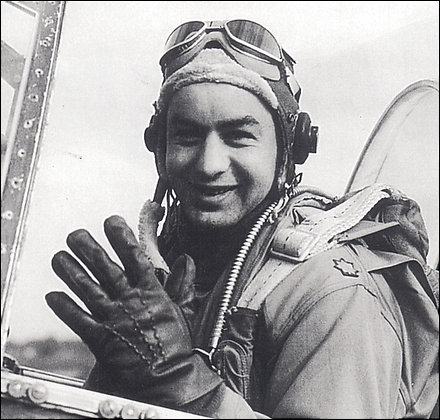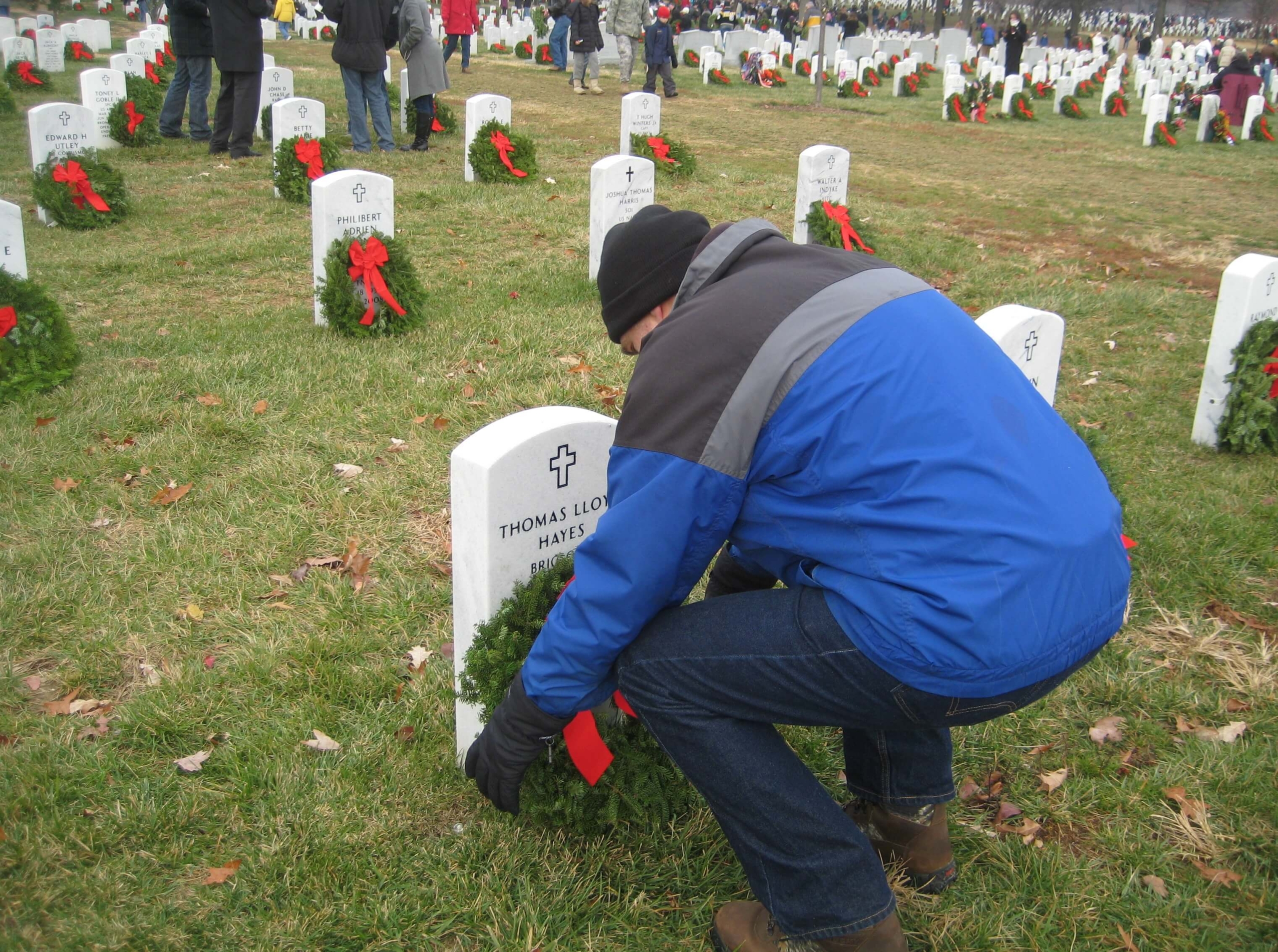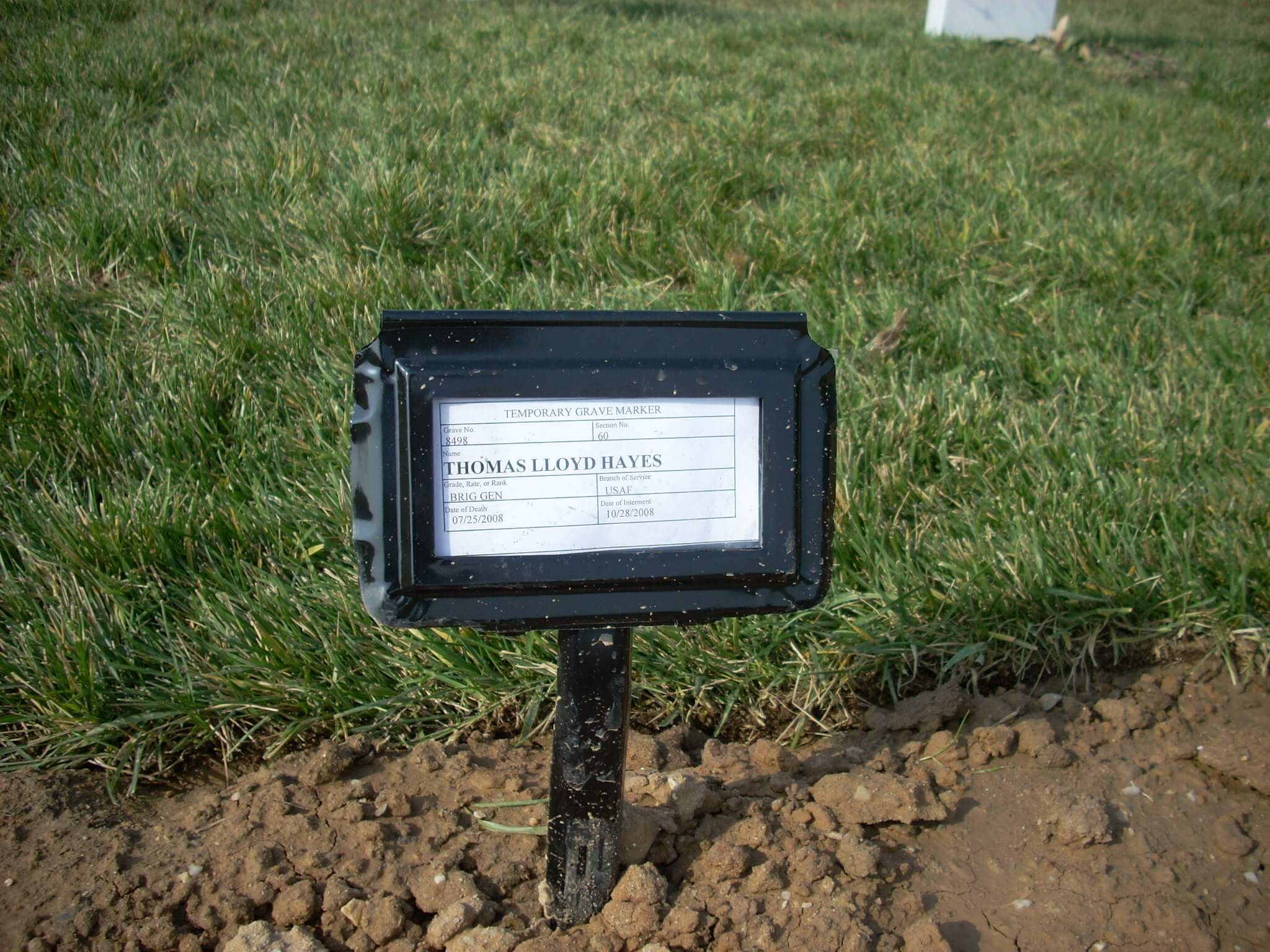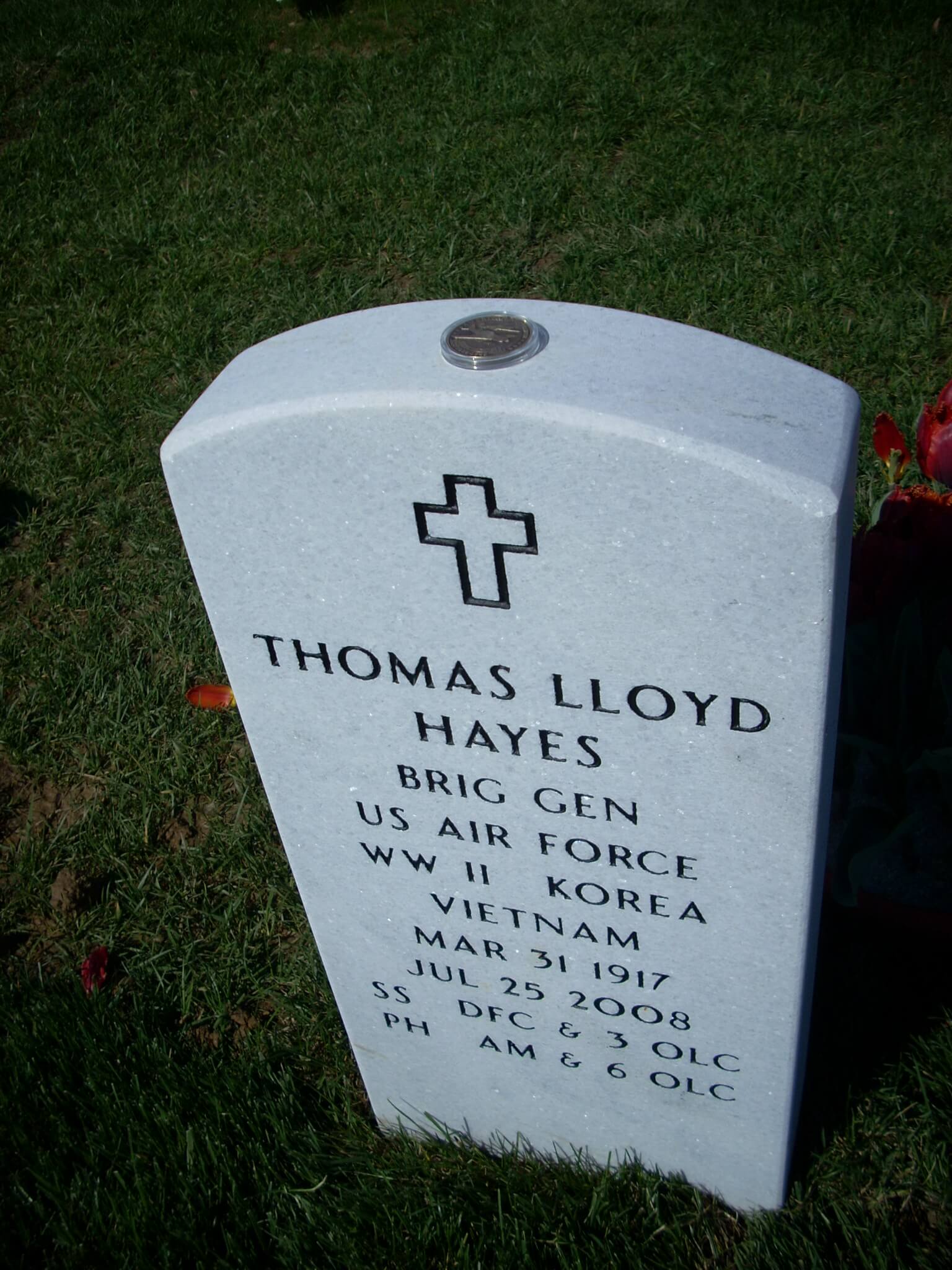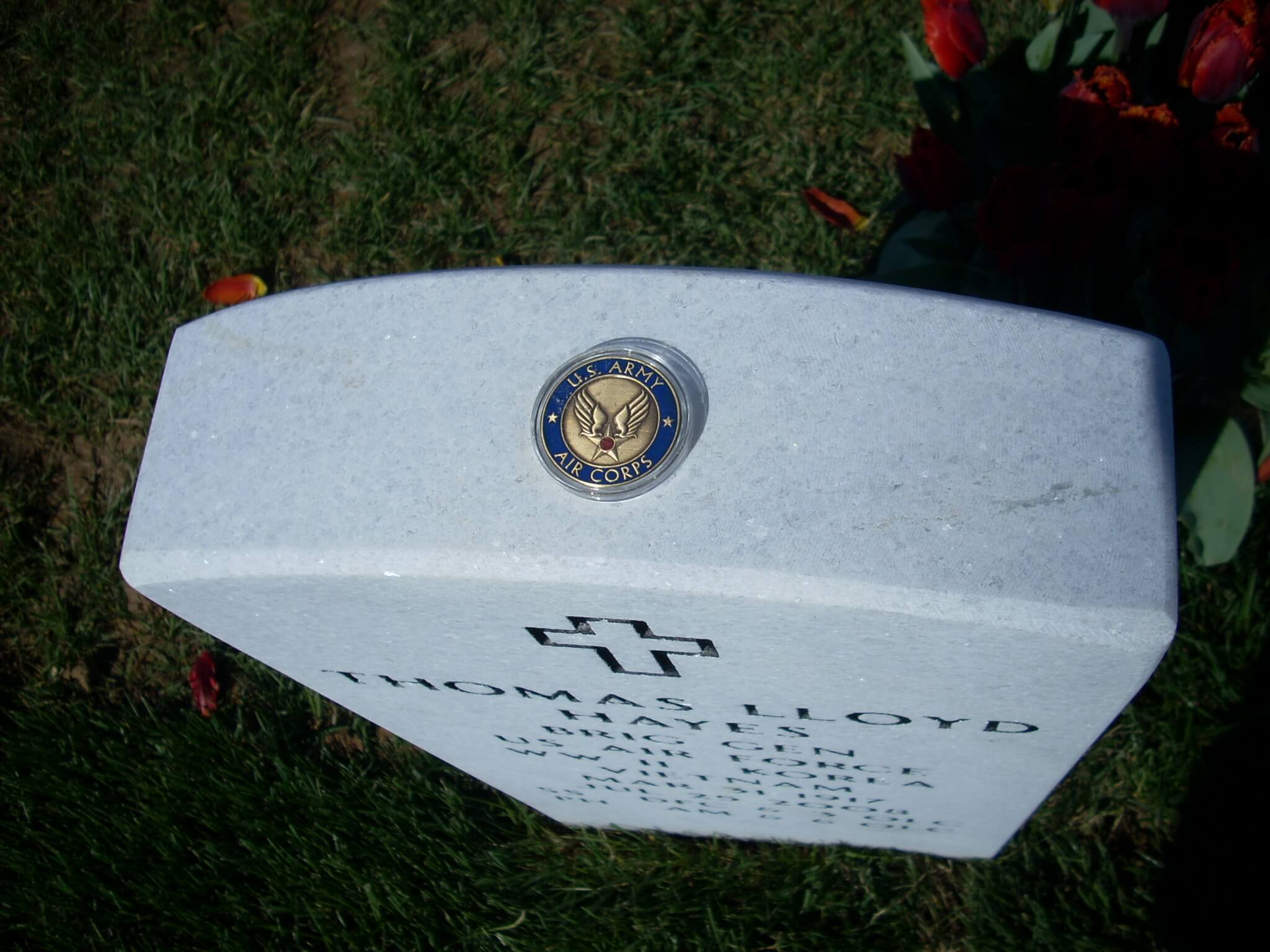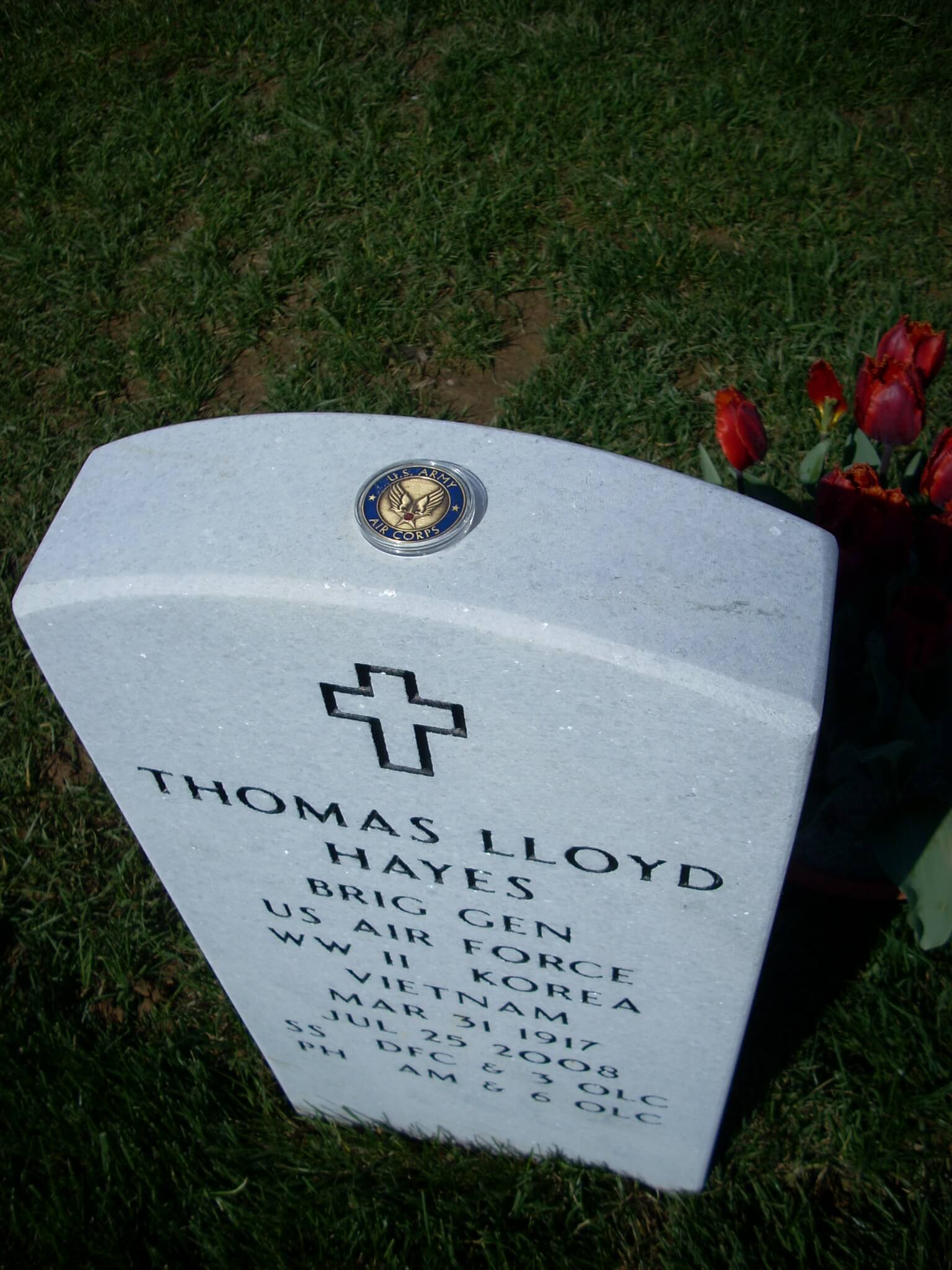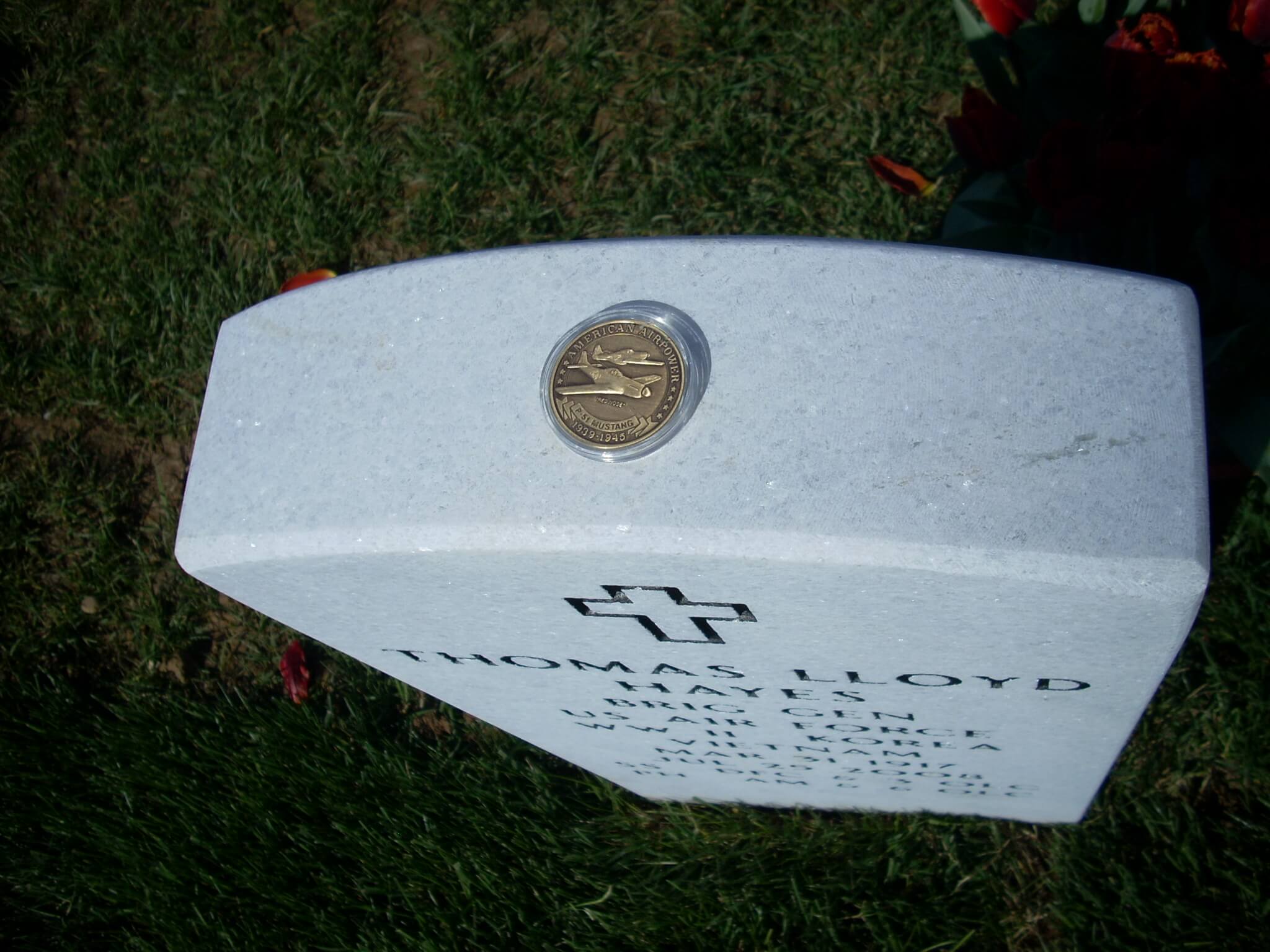Thomas L. Hayes, 91; Ace WWII Pilot Took Part in Berlin, D-Day Missions
By Joe Holley
Courtesy of The Washington Post
Thursday, July 31, 2008
Thomas Lloyd Hayes, 91, a retired Air Force Brigadier General who won designation as an ace pilot in Europe and the Pacific during World War II, died of complications from Alzheimer's disease July 24, 2008, at Reston Hospital Center. A former Annandale, Virginia, resident, he had lived in Potomac Falls, Virginia, for the past 10 years.
The requirement for an ace is five or more documented aerial victories. General Hayes was credited with the destruction of 8 1/2 German and two Japanese aircraft. He flew 485 hours in 143 combat missions.
He was in the South Pacific for most of 1942, based at a converted sugar mill in Java, where his orders were to “interfere” with the Japanese push toward Australia. He was shot down by a Japanese Zero fighter over Bali.
He later went to England as a squadron commander and, on March 6, 1944, led one of the first successful daylight raids and long-range attacks on Berlin. Twenty enemy aircraft were destroyed during the raid, and all the planes of the 357th Fighter Group returned safely.
Gen. Hayes was the deputy commanding officer of the 375th Fighter Group — known as “the Yoxford Boys” after a nearby village of that name — which was credited with the highest kill ratio for the U.S. Army Air Forces in Europe.
The 357th produced 42 aces and had more victories against German jets than any other unit.
General Hayes also flew the only P-51D that participated in the Normandy invasion, flying two missions on D-Day. The P-51D, the first fighter aircraft with sufficient range to make the round trip from England to targets deep inside Germany, was his favorite plane.
He won the Silver Star for destroying two Japanese Zeros and three Distinguished Flying Crosses, and was awarded a Purple Heart.
General Hayes was born in Portland, Oregon, and was inspired to become a pilot when, as a 10-year-old, he attended a parade for Charles Lindbergh after his triumphant solo flight over the Atlantic.
“I almost touched him. He was a big hero of mine,” General Hayes told The Washington Post in 1999. “I went to go shake his hand and then the police got me.”
He originally wanted to be a Navy flier because he came from a family of seafarers, but when he attempted to enlist in a Navy flight program, he was told he had to have a college degree.
He enrolled at what is now Oregon State University and two years later learned at an air show that the Army Air Corps required only two years of college. He dropped out of school and enlisted immediately.
He received an undergraduate degree in political science from the University of Oregon in 1948 and a master's degree in fine arts from American University in 1973. He also graduated from the NATO Defense College in Paris.
Between 1945 and 1965, General Hayes worked in air defense and fighter operations, including service during the Korean War in the Air Force's war plans division. After various commands, he was assigned in 1966 to the Pentagon, where he arranged shipments of supplies and materiel to Vietnam. He retired in 1970.
While stationed in Spain, General Hayes fell in love with painting and studied with a Madrid artist, Eduardo Cobos. Although neither could speak the other's language, they enjoyed painting side by side. General Hayes, who enrolled in American University's fine arts program the day he retired from the military, painted still lifes — old barns, rural scenes and flowers.
A woodworker as well, he made hope chests for his daughters, hand-lathed cradles for his granddaughters and fashioned Windsor chairs for his grandsons.
He enjoyed working with young people, especially those struggling with writing assignments, as he had during his youth. He often made himself available to schoolchildren and enjoyed answering their questions about World War II. His memberships included Our Lady of Hope Roman Catholic Church in Potomac Falls.
A daughter, Suzanne des Cendres, died in 2004.
Survivors include his wife of 67 years, Margaret Louise Hayes of Potomac Falls; four daughters, Marilyn Kraus of Fairfax County, Carol Hayes of Tallahassee, Jane Hayes of Homeworth, Ohio, and Dorothy Thibblin of Burke; 13 grandchildren; and seven great-grandchildren.
HAYES, THOMAS LLOYD
BRIG GEN US AIR FORCE
WORLD WAR II, KOREA, VIETNAM
- DATE OF BIRTH: 03/31/1917
- DATE OF DEATH: 07/25/2008
- BURIED AT: SECTION 60 SITE 8498
ARLINGTON NATIONAL CEMETERY
Michael Robert Patterson was born in Arlington and is the son of a former officer of the US Army. So it was no wonder that sooner or later his interests drew him to American history and especially to American military history. Many of his articles can be found on renowned portals like the New York Times, Washingtonpost or Wikipedia.
Reviewed by: Michael Howard

